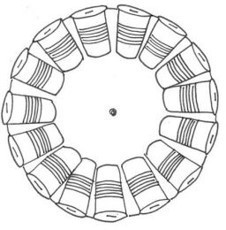
Overview
Title: Hydroelectric Energy – Making a Water Wheel
Grade: 5th Grade
Duration: 45 Minutes
Water is one of the first renewable resources we used to generate power.
In this lab, students make water wheels in order to observe how the energy of flowing water turns the wheel. The turning wheel can then be used to power other machines. This is called hydropower.
Problem Statement
How can the force of flowing water generate power?
Materials
Each group will need:
- Wooden skewer sticks
- Sturdy disposable plates – (Size: 8 ½”)
- Box of 3-ounce paper cups – (100 cups)
- Masking tape
- Stapler with staples
- Small bucket
- Water
Procedure
Make sure to follow the following procedures. Watch closely in order to make observations about what occurs and document what happens.
1. Take the two plates that are about 8 ½” in diameter an lay them one on top of the other.
2. Puncture a hole using a pencil or another sharp object through the center of both plates.
3. Take one of the plates and start stapling or taping the paper cups along the edge all the way around. The edge of the cup should be flush along the edge of the plate (see picture below.)
4. Once you have finished placing all the cups around, take the other plate and line it up with the one that you just added the cups to. Staple or tape all the cups with the other plate.
5. Place the wooden skewer stick through the holes you made in the center of the plates.
6. You now have a water wheel!
7. Balance your water wheel on the bucket.
8. Start pouring water onto the water wheel.
9. Don’t pour your water at the very top of the wheel – instead aim for the cups that are slightly down.
10. Your water wheel should now start turning!
11. Reflect:
- What is causing the wheel to turn?
- What observations did you make?
- How can I alter the design of the water wheel to generate more power?
